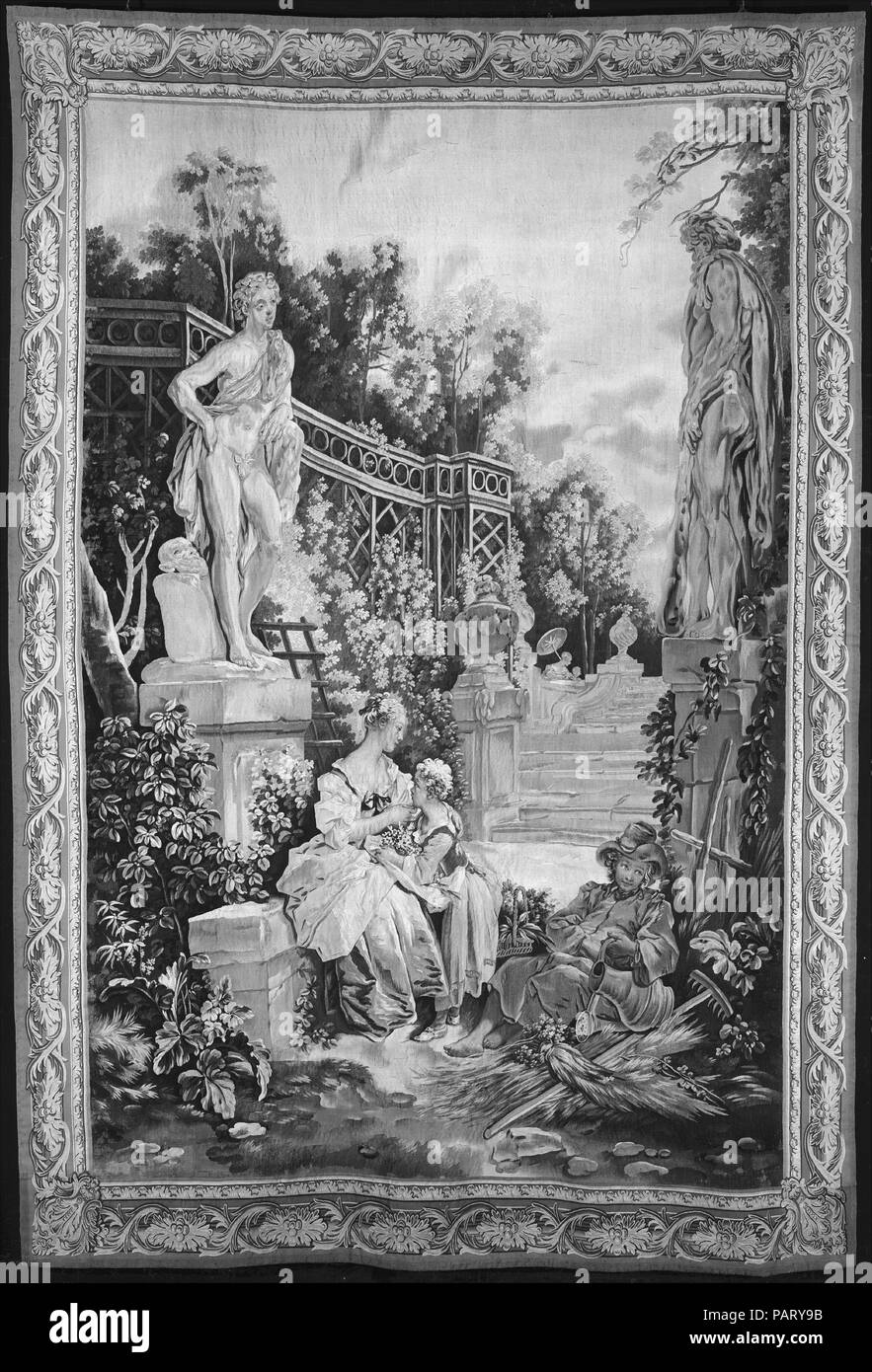The Gardener from a set of the Italian Village Scenes. Culture: French, Beauvais. Designer: Designed by François Boucher (French, Paris 1703-1770 Paris). Dimensions: H. 110 1/2 x W. 73 inches (280.7 x 185.4 cm). Manufactory: Beauvais. Patron: Boulard de Gatellier (Château de Gatellier (Loire)). Workshop director: André Charlemagne Charron (French, active 1754-80). Date: designed 1734-36, woven 1762. Images of gardens were popular in the tapestry medium from the medieval era, where the so-called mille-fleurs (thousand flowers) (see also 2013.506) provided a decorative, and sometimes symbolic,

Image details
Contributor:
Album / Alamy Stock PhotoImage ID:
PARY9BFile size:
32.7 MB (3 MB Compressed download)Releases:
Model - no | Property - noDo I need a release?Dimensions:
2786 x 4100 px | 23.6 x 34.7 cm | 9.3 x 13.7 inches | 300dpiPhotographer:
AlbumMore information:
This image could have imperfections as it’s either historical or reportage.
The Gardener from a set of the Italian Village Scenes. Culture: French, Beauvais. Designer: Designed by François Boucher (French, Paris 1703-1770 Paris). Dimensions: H. 110 1/2 x W. 73 inches (280.7 x 185.4 cm). Manufactory: Beauvais. Patron: Boulard de Gatellier (Château de Gatellier (Loire)). Workshop director: André Charlemagne Charron (French, active 1754-80). Date: designed 1734-36, woven 1762. Images of gardens were popular in the tapestry medium from the medieval era, where the so-called mille-fleurs (thousand flowers) (see also 2013.506) provided a decorative, and sometimes symbolic, setting for scenes of romance and play. Park and garden tapestries continued to enjoy popularity throughout the sixteenth and seventeenth centuries, particularly for the decoration of more intimate chambers, where they provided a pleasant contrast with the grander subject matter of tapestries used in more formal settings. The theme enjoyed new popularity with the advent of the Rococo style during the eighteenth century, and a number of highly decorative landscape and garden series were produced in French and Netherlandish workshops during the second third of the eighteenth century. Among the most notable was the series of romantic pastorals that Boucher designed for the Beauvais workshops between 1734 and 1736 (64.165.1-.8). Known as the Fetes Italiennes, and loosely inspired by the idyllic park scenes of Antoine Watteau, this series depicted handsome gentlefolk and peasants in idealized exterior settings. In this case, a pretty young woman, a child, and a gardener rest in the shade of an overgrown terrace, beneath statues of Apollo and Hercules. Museum: Metropolitan Museum of Art, New York, USA.